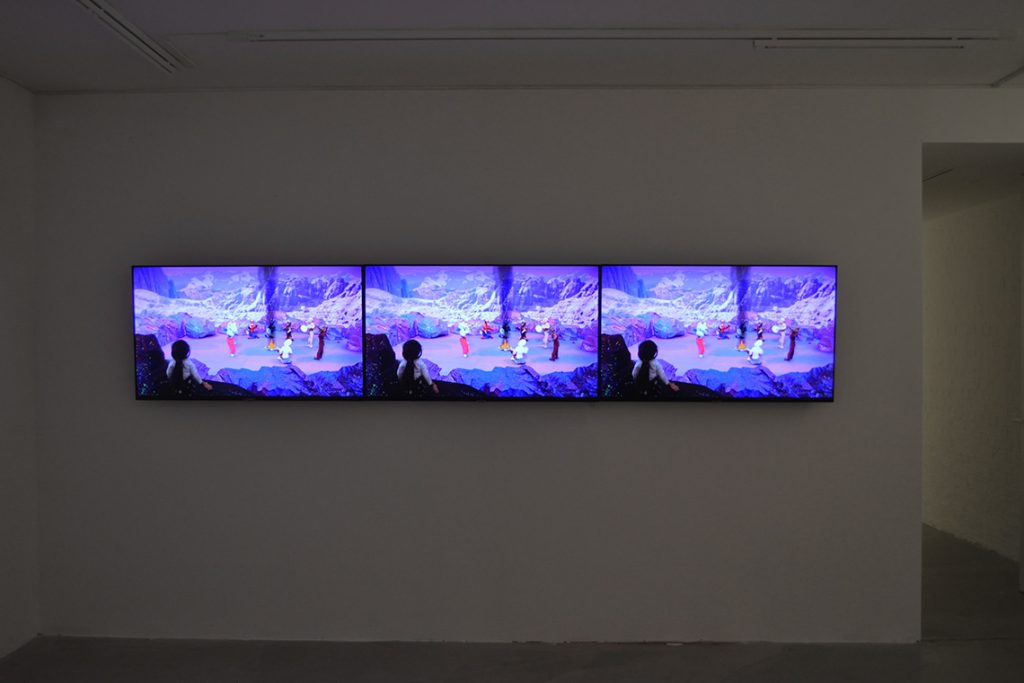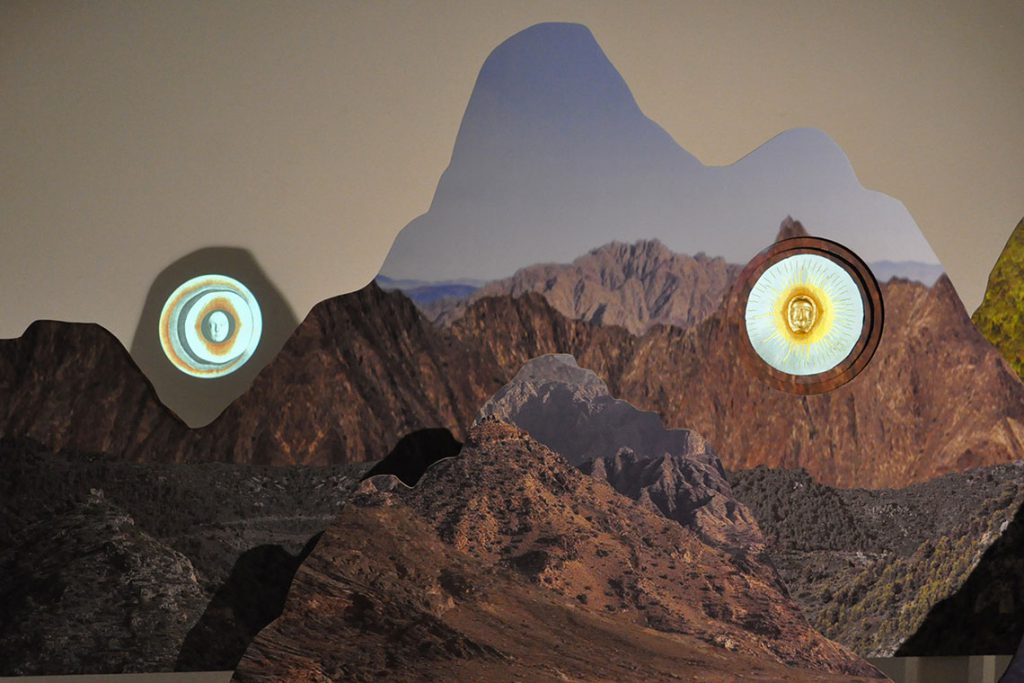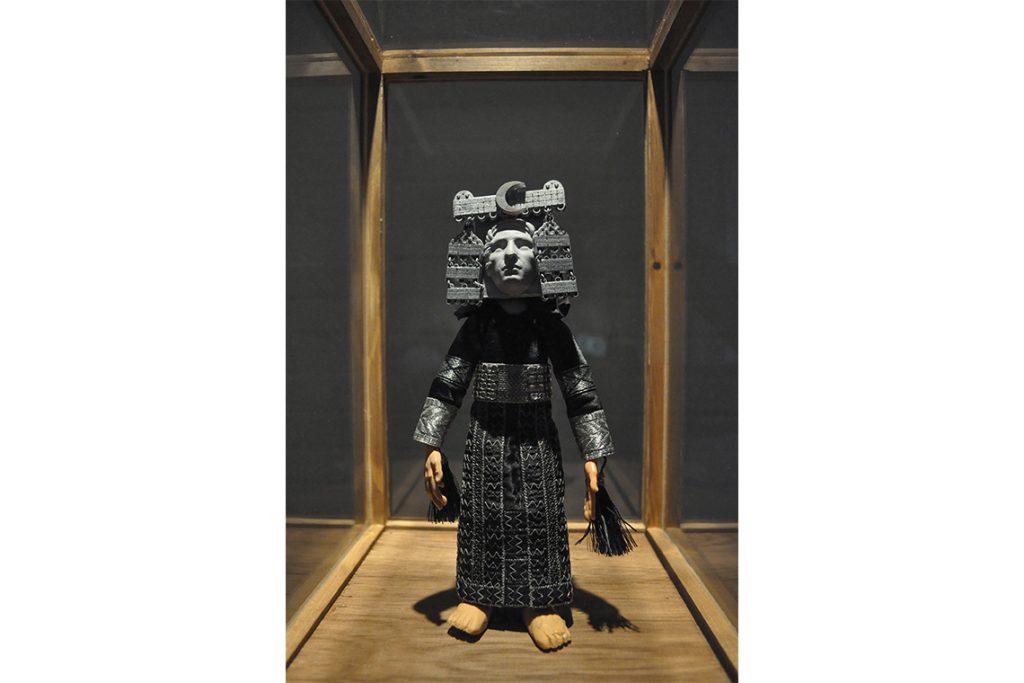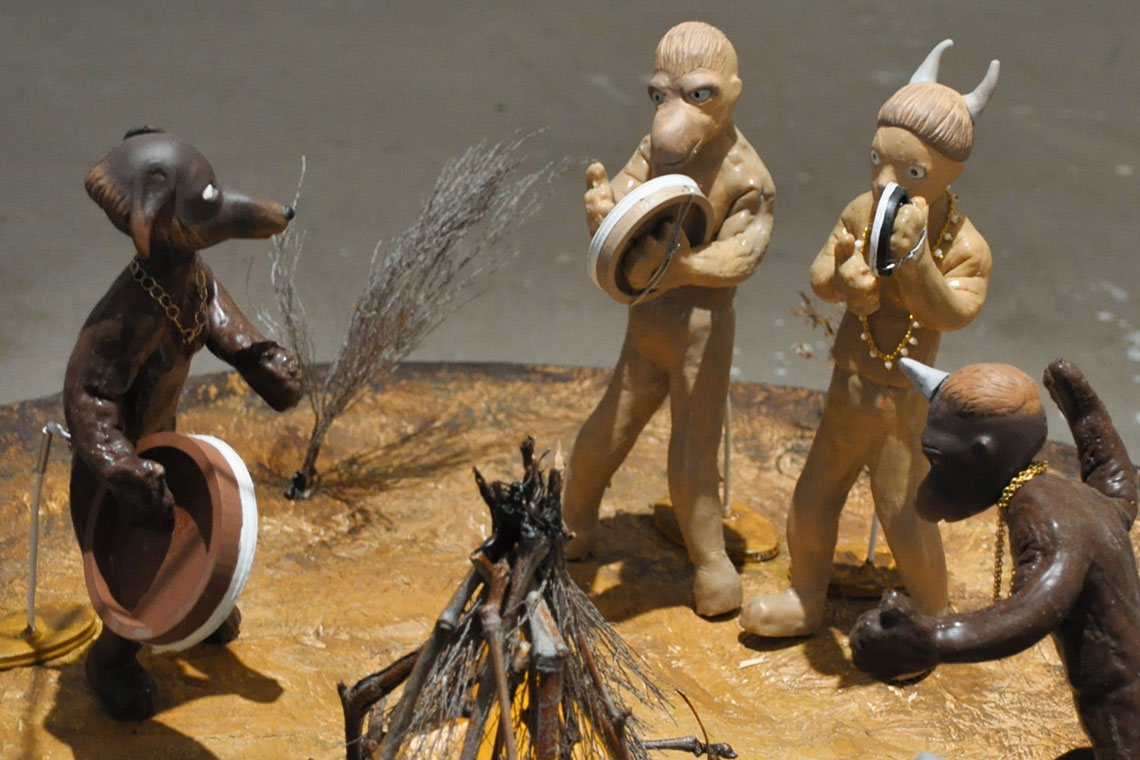Abdulmohsen Albinali reimagines ancient stories in his enchanting solo exhibition at Ab-Anbar Gallery, making the case for the use of stop-motion animation not just as a nostalgic medium, but as a form of art in its own right.
Abdulmohsen Albinali’s In the Dreamer’s Dream is the Saudi-born artist’s first solo show at Ab-Anbar Gallery in London. The gallery is generously sized by London standards, although almost easy to walk right past if it were not for the large “Ceasefire Now” poster in its front window. Yet, Albinali’s modest exhibition is tucked away in the gallery’s basement and feels like entering directly into the mind of the artist and filmmaker.
As one descends downstairs, a rhythmic sound emanates from below and the room is bathed in a half-light – a stark contrast to the bright room above. The effect prompts a feeling of having stumbled upon some sort of ritual, hidden in the shadows and with the sense of secrecy engendering the idea of encroaching upon a private space. During the opening, the visitors looked around them with seemingly the same thoughts: are we allowed to be here?
Although confined to a small area, there is no shortage of appealing visuals. The exhibition consists primarily of a three-channel film on a loop playing Albinali’s recent stop-motion animation film The Dreamer Dreams (2023) which follows a priestess named Khalimah as she awakens within one of her dreams, subsequently discovering an unnerving event taking place around a fire.

Albinali’s sculptural installations of collaged mountain ranges, entitled Pleasant journeys into far away lands (Tabula Rogeriana) I and II (both 2024) are showcased in the film, as well as the enchanting revolving diorama with figurines ‘dancing’ statically around the flickering fire in Istinzal: “Ecstatic drumming collapse” (2024), which is placed prominently in the middle of the room.
The scene depicted in Istinzal features memorably in the short film, as the clay figures come to life to perform rhythmic, ritualistic tasks. Albinali’s work is deeply informed by the tradition of oral storytelling in the Arabian Peninsula, particularly by the tales passed down through women in his family, especially by his mother. This exhibition and the film are a tribute to these women, who have played crucial roles in passing these stories on to future generations.
Unlike Khalimah in the film, the characters around the fire have animalistic features and behaviours. A dog stands erect like a human, banging a paw against a tambourine-like instrument, while horned beasts follow suit. A blue figure wearing a red cloth tied around their waist with gold chains is mid-backflip in the frozen scene on the floor-bound table.

Clearly conceived as a behind-the-scenes look at the film’s stop-motion, there is something uncanny and shockingly alive in Istinzal. Placing the small display on the floor draws the audience further into the scene in an experience almost more powerful and immersive than the short film itself. Albinali possesses a remarkable ability to imbue life and movement into static figures, which allows us to construct the scene in our minds and serves as a tonic for the imagination.
The decision to represent those partaking in the ritual dancing around the fire as animals is also an intriguing element. There is something taboo about the scene that Khalimah stumbles upon when she wakes up within her dream, which is understood through the portrayal of these figures. It is as if this act of dancing around a fire has reduced these men to a most basic animal instinct. Traditionally, these fire dances and rituals were frowned upon in the Muslim world, as they were believed to bring about jinn, a spirit born from a smokeless fire which can possess humans, and tends to inhabit dark and deserted places. Indeed, Khalimah, as she peers in on the scene, is chased by a smokey figure.
Many elements of Albinali’s work are reminiscent of childhood, with the stop-motion animation inspired by films he used to watch in his youth, a charmingly retro choice. By deconstructing the short film to create an exhibition, he is giving the audience the freedom and curiosity felt only in children’s play, which perhaps artists can also still experience in the act of creation. It is a generous offering on Albinali’s part to permit us to let our imaginations run loose, tapping into something that creatives often retain, but for many can only be held onto through conscious effort.

The nostalgia within Albinali’s practice is tempered by an ancient gravity in his chosen subject matter. The final elements in the exhibition, two sculpted figures in glass cases from a previous body of work, Qamariyah (2023) and Shamsiyah (2023), underscore the importance to the artist of preserving the past and treating it as something precious. Elevated to eye level, the cases are set directly across from the sculptural installation of mountain ranges as the mountains look back at them. They are perhaps perplexing to an audience unfamiliar with the artist’s work, and require an explanation of his intentions – unlike the other artworks in the exhibition, which speak for themselves. According to Albinali, these pieces are included to emphasise the value in his past practice as it informs the present, and act as an archive of his work.
With such careful attention to detail and a gift for working in stop-motion animation, Albinali has me thoroughly convinced of the technique’s revival as a contemporary art form. He has proven his ability to capture and captivate an audience in a small space, with his universe of magical thinking and strange rituals. There is surely a place for this sort of whimsical animation and sculptural installation, which sets itself apart in today’s art world. I only hope to see Albinali’s work continue along the same path, perhaps in more large-scale productions, though perhaps the beguiling quality of this particular exhibition is found in these intimately sized works.
In the Dreamer’s Dream runs until 10 August 2024



